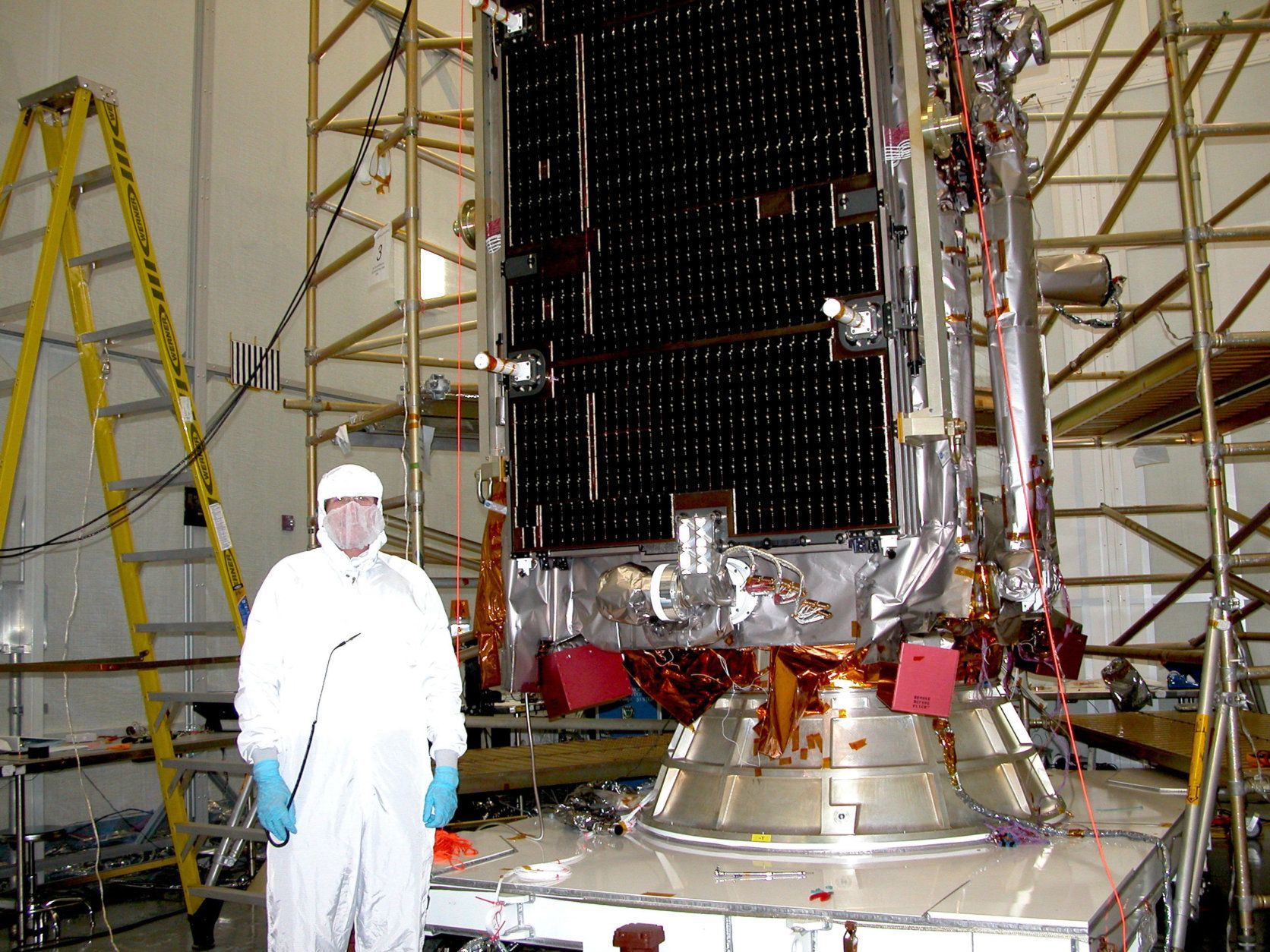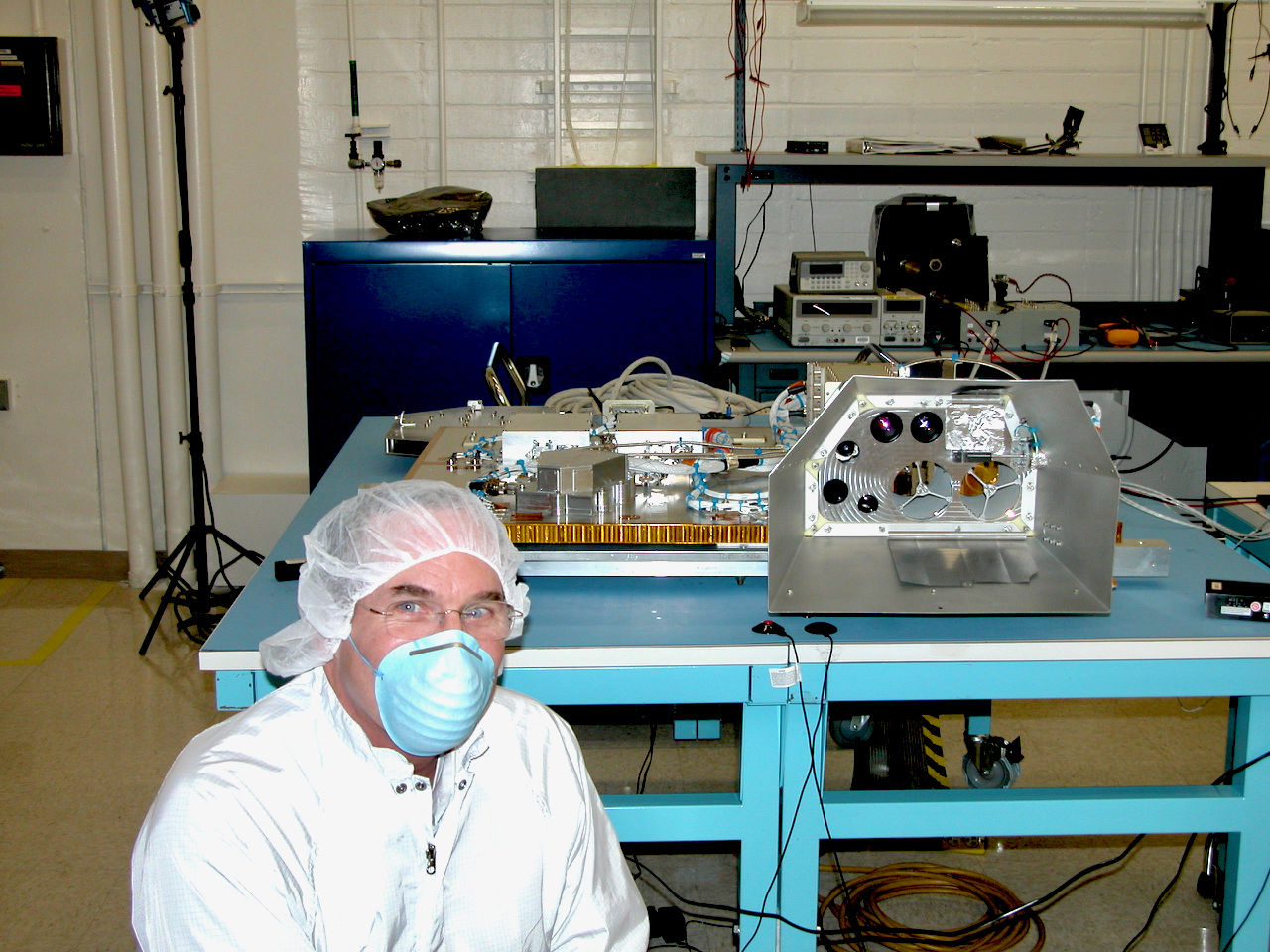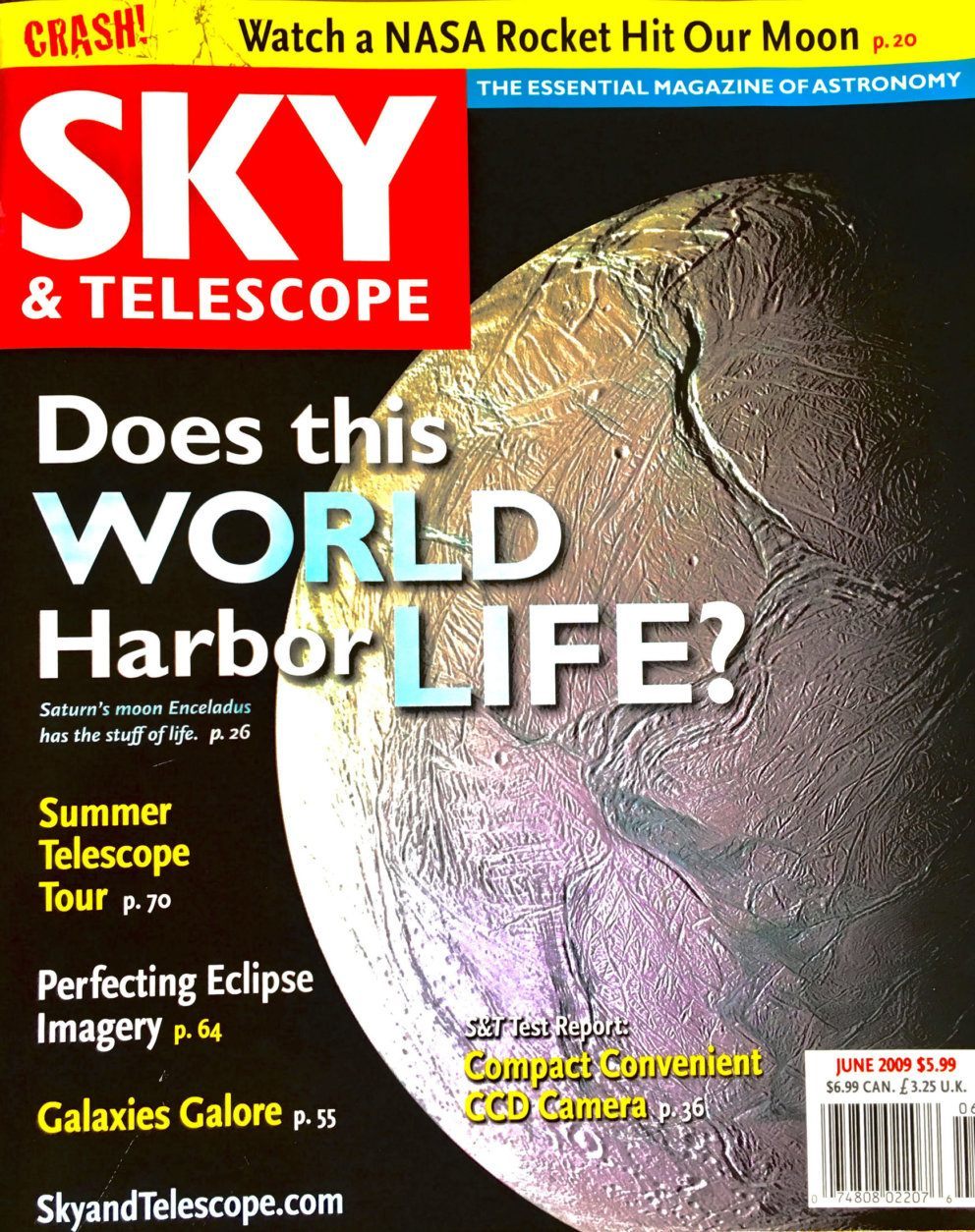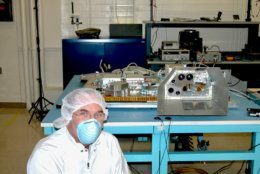As we count down to the 50th anniversary of Apollo 11’s July 20, 1969, landing on the moon, there has been a lot of recent press and social media about the moon. Apollo 11 books, coins, T-shirts, collectibles, movies, LEGO sets, plastic models, NASA oral histories — all abound as we commemorate this historic moment.
But, buried in the history of lunar exploration is another anniversary: June 18, 2009.
On that date, NASA successfully launched not one but two spacecraft — Lunar Reconnaissance Orbiter (LRO) and Lunar Crater Observation and Sensing Satellite (LCROSS) — on an Atlas-V rocket to the moon.
LRO was built at the Goddard Space Flight Center, in Greenbelt, Maryland, while LCROSS was built at NASA’s Ames Research Center in Moffett Field, California. I had the rare opportunity to put on a “bunny suit” and have a closer look as these two spacecraft were being built.






I was doing a story on the spacecraft and their mission to the moon for Sky and Telescope magazine’s June 2009 issue. I also had access to the scientists and engineers to get the details of the mission. This was a thrill of a lifetime for a moon lover like myself — to be within inches of spacecraft headed to the moon!
After launch, the spacecraft eventually made their way to the moon. LRO was destined to spend many years in lunar orbit in order to observe the moon as never before, with cameras and instruments that would revolutionize our knowledge about Earth’s companion in space.
LRO would also witness the intentional demise of LCROSS, whose mission was to fly through an ejecta plume raised by the impact of the mission’s Centaur upper stage rocket into Cabeus Crater. The goal was for the instruments on LCROSS to “sniff and analyze” the lunar material raised 10 miles high by the impact.
On Oct. 9, 2009, probably every capable telescope on Earth was trained on the south pole of the moon, where Cabeus Crater is. It was not known whether the ejecta plume would be visible from Earth — it was not, unfortunately — but that didn’t keep people from looking, myself included.
The Centaur hit Cabeus, and LCROSS flew through the ejecta plume to impact deep inside Cabeus. LCROSS and LRO made their observations and radioed the data to Earth.
NASA said in a news release, “After the impacts, grains of mostly pure water ice were lofted into the sunlight in the vacuum of space.” LRO and LCROSS had unequivocally confirmed that water ice existed inside a permanently shadowed crater — one that has never experienced sunlight.
Just a month before, NASA had announced the presence of water on the moon due to data from LRO. There had been indications of water on the moon from prior missions, but LRO “iced” it as far as proof.
How ironic that LRO and LCROSS were lunar missions designed to support President George W. Bush’s Constellation Program, which he announced in January 2004. That mission was going to return American astronauts to the moon by 2020. Sound familiar?
Constellation was never funded to the level needed ($230 billion) and was canceled by President Barack Obama. Work did continue on some aspects of Constellation; namely, a number of moon missions that were to pave the way for astronauts’ return to the moon, the Orion crew spacecraft and a new rocket called the Space Launch System.
Spring forward to the current administration’s vision of “Returning America to the Moon by 2024 — Project Artemis.”
NASA Administrator Jim Bridenstine just announced a price tag of between $20 billion and $30 billion to achieve the goal. Based on decades of experience watching space programs come and go, the price will be most likely higher.
To be blunt, Artemis is all pie in the sky unless it gets funded. To quote the famous line from the Oscar-winning movie “The Right Stuff”: “No bucks, no Buck Rogers.”
There is a “moon race” going on right now, and China is leading the way, with more daring missions planned to include a sample return mission planned for the end of 2019.
The moon is the eighth continent, and a whole new economy and resources await “those who go to stay this time.” America has a real opportunity to achieve the goals of Artemis but must commit now to doing so by going all in on funding and program execution.
The moon beckons humanity, and LRO is still there, showing us the way after 40,000 orbits and more data collection than all other NASA planetary missions combined.
Today, the LRO group at Goddard is celebrating the spacecraft’s 10th anniversary. I was invited but could not attend, unfortunately. LRO is in good shape with its human team and plenty of fuel onboard for years to come.
I think of LRO every time I look at the moon and send a fond hello. Hard to believe, but humans can love machines. I hope you will, too.
Follow my daily blog to keep up with the latest news in astronomy and space exploration. You can email me at skyguyinva@gmail.com.







